Hippotherapy
Hippotherapy is a physiological treatment used by physical and occupational therapists and speech and language pathologists. Practitioners use the multidimensional movement of the horse to stimulate neuromotor, sensory, and cognitive systems, facilitating positive changes in the client. The warmth, gait, and size of the horse challenge proprioception, encourage core strengthening, stretching, and can benefit other, more specific areas of focus.
Practitioners use clinical reasoning and evidence-based practice to make adjustments to the horse’s movement. Throughout a session, various positions are used. The client may be positioned sitting backwards, sideways, or lying upon the horse’s back. Most hippotherapy treatments are carried out in motion, with the horse being lead or long-lined.
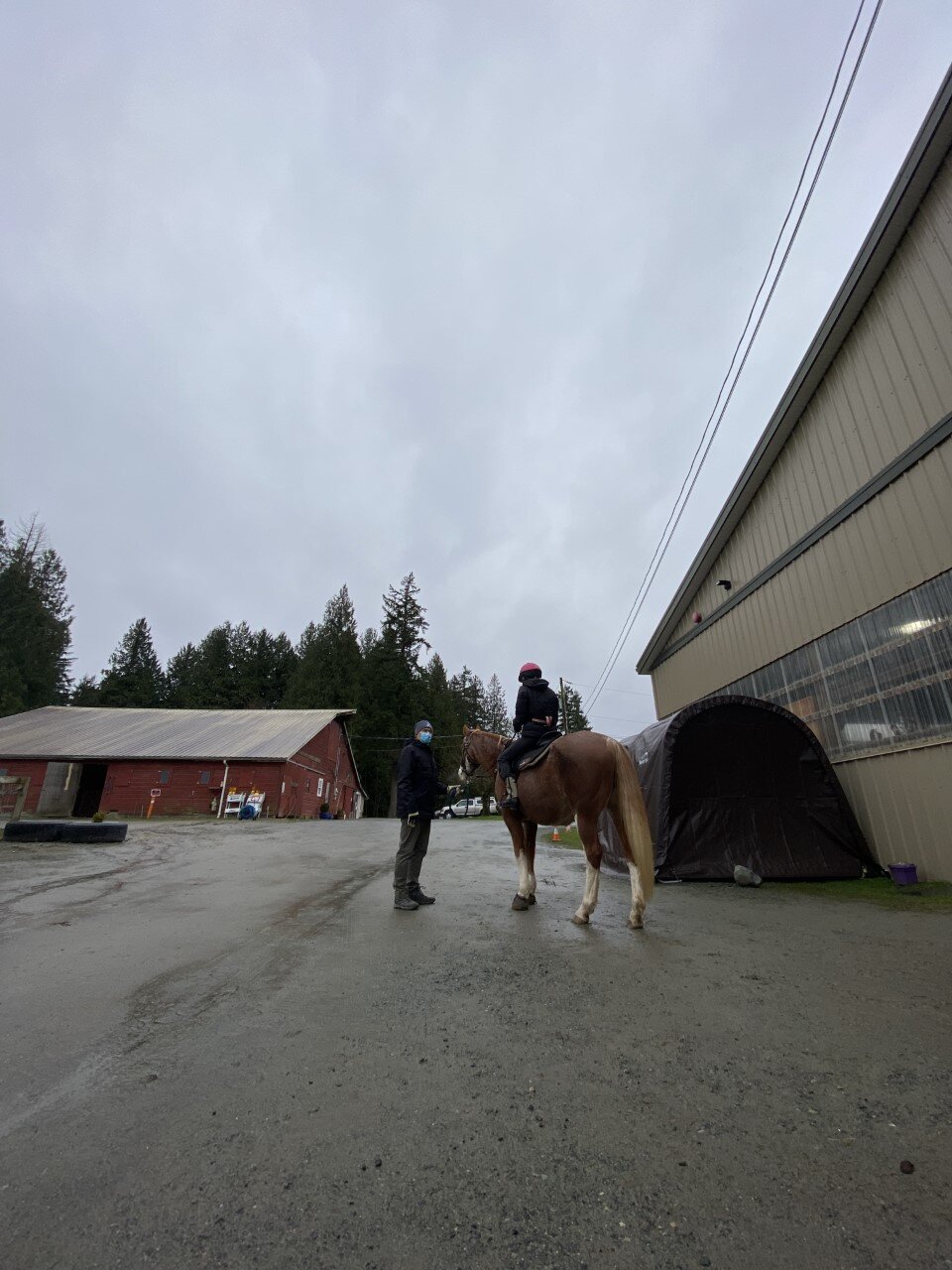




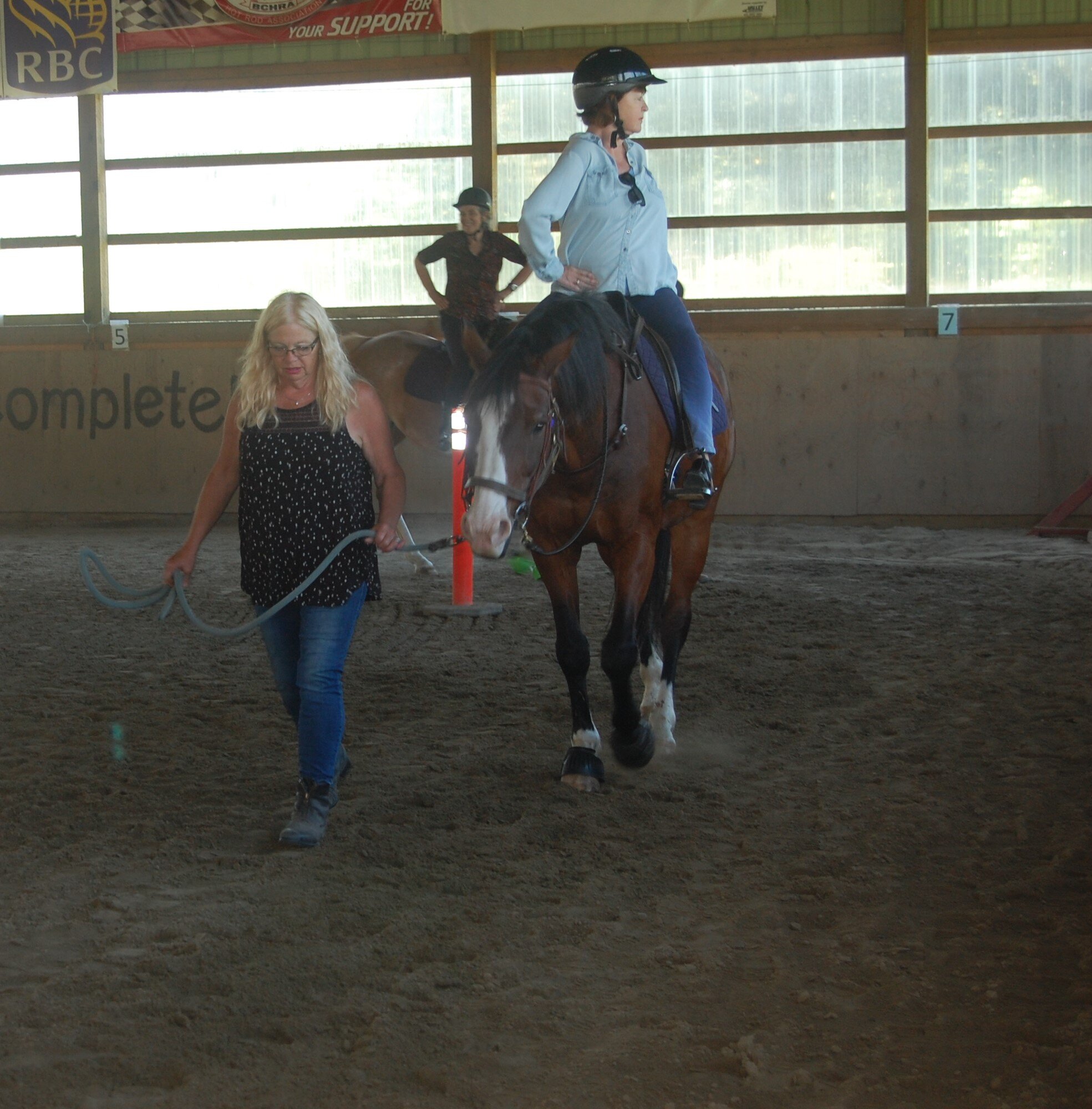

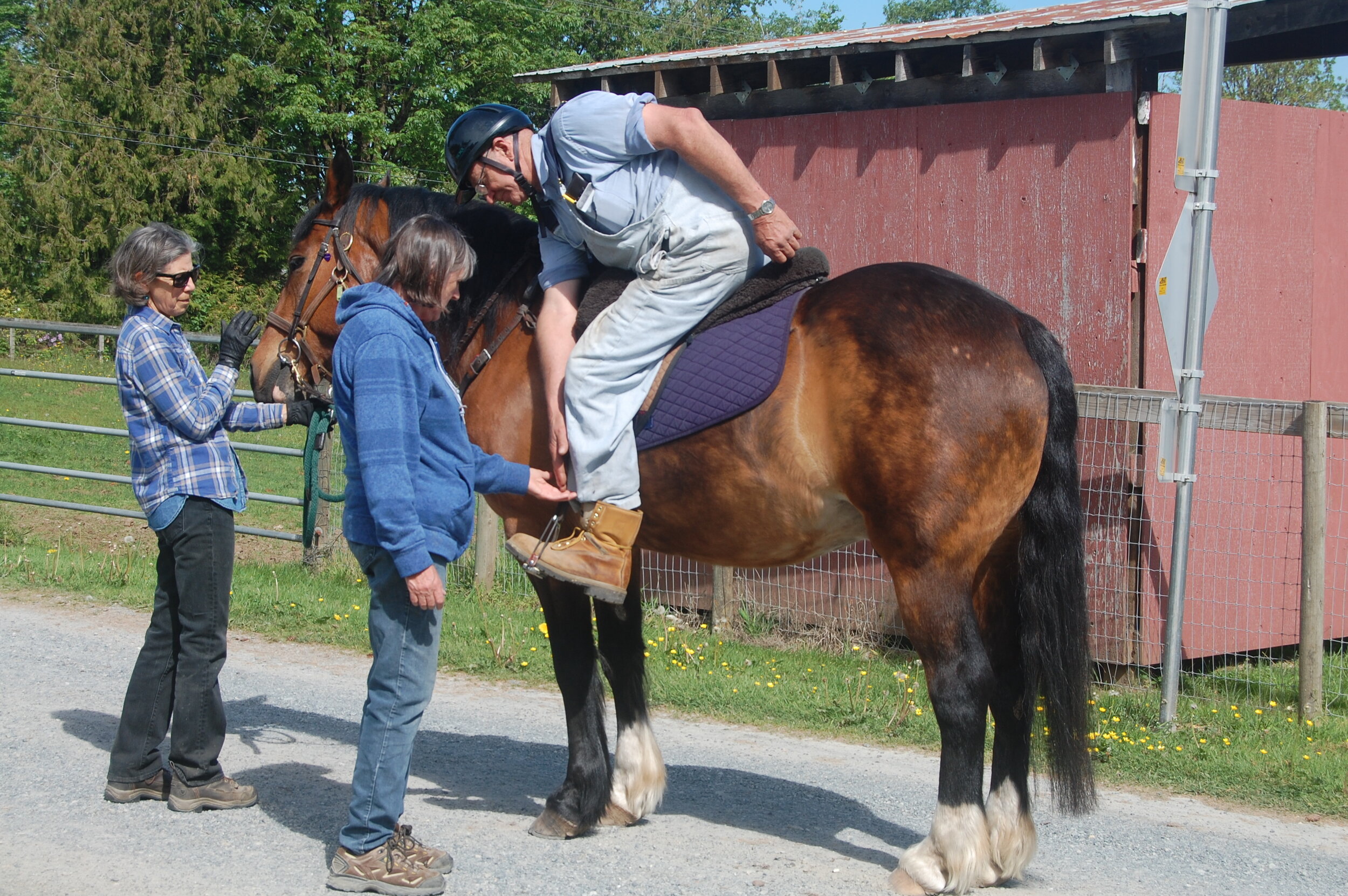
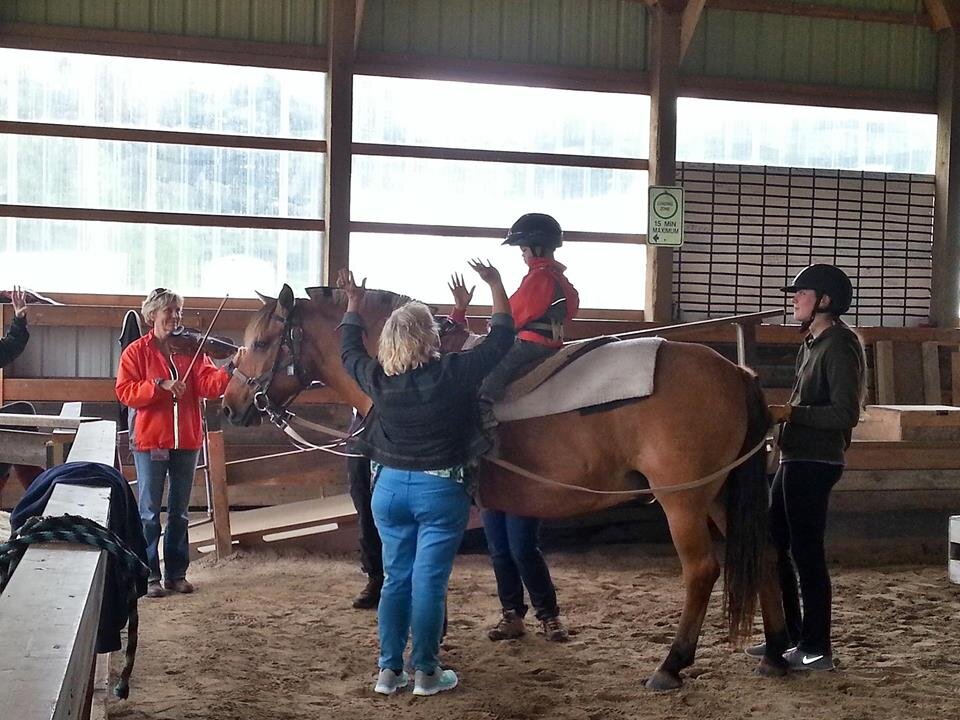
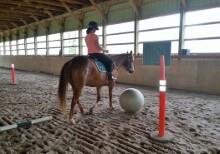
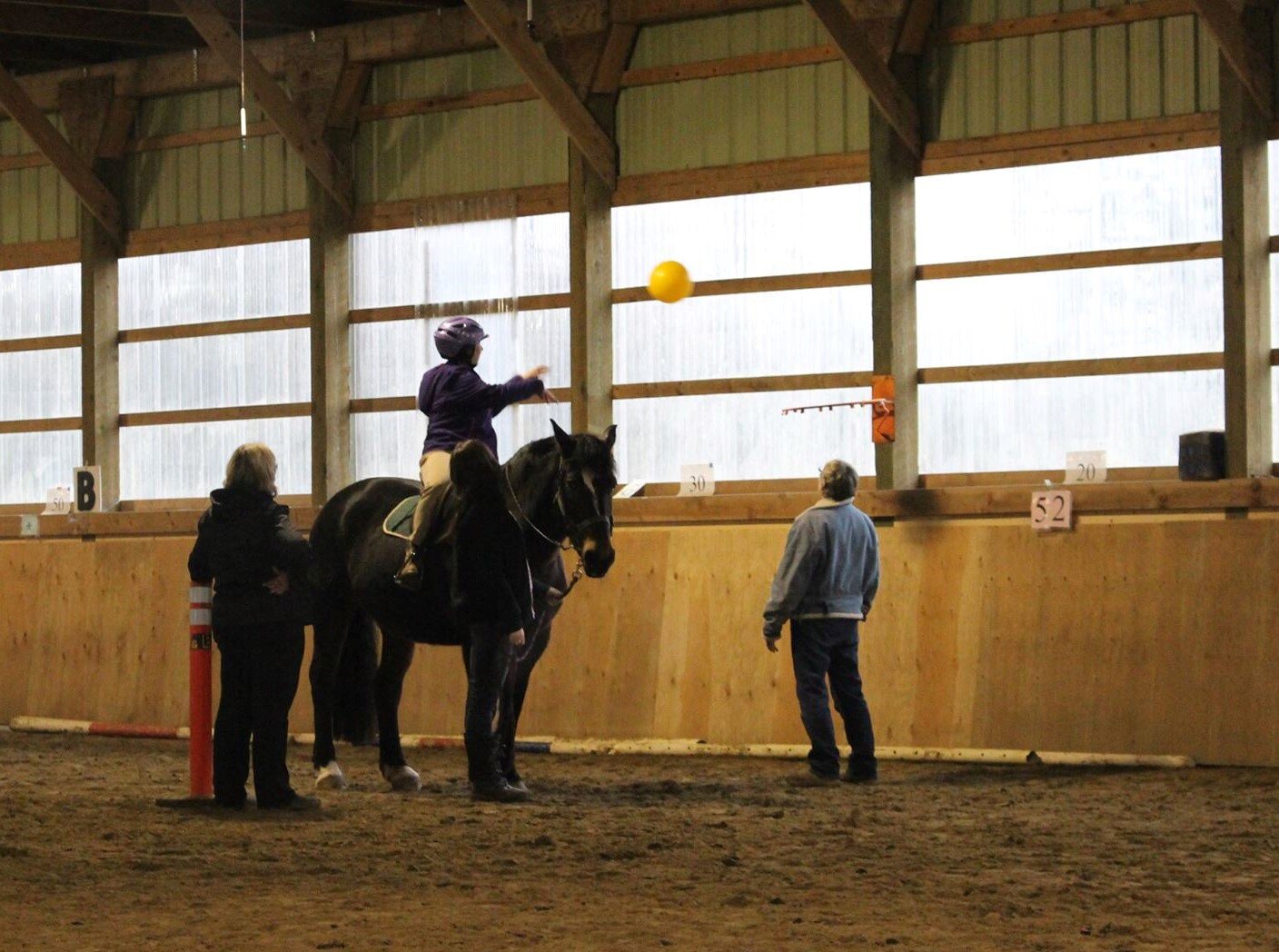
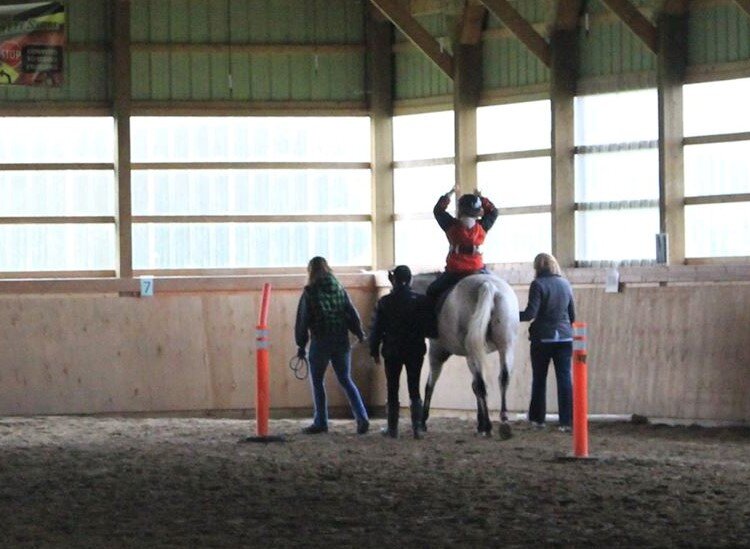
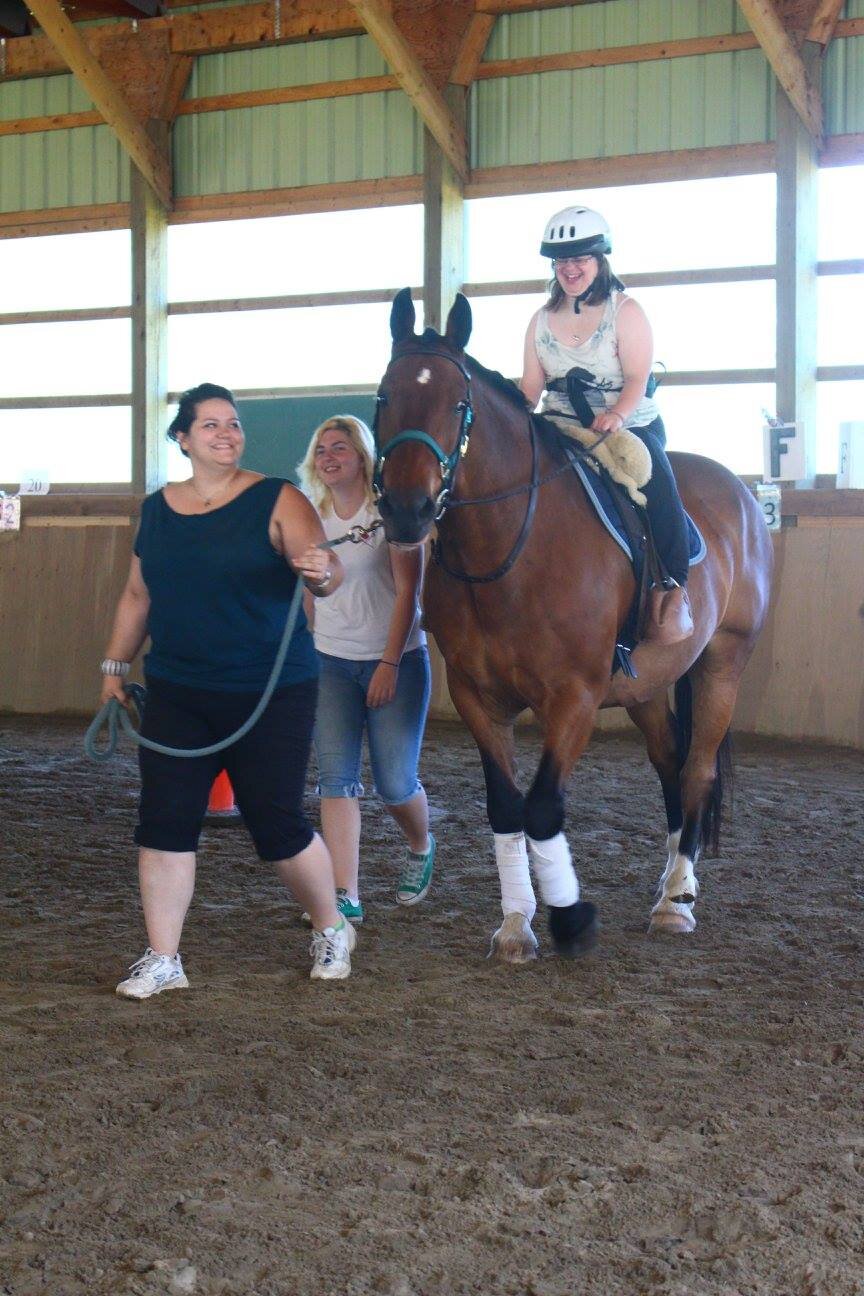
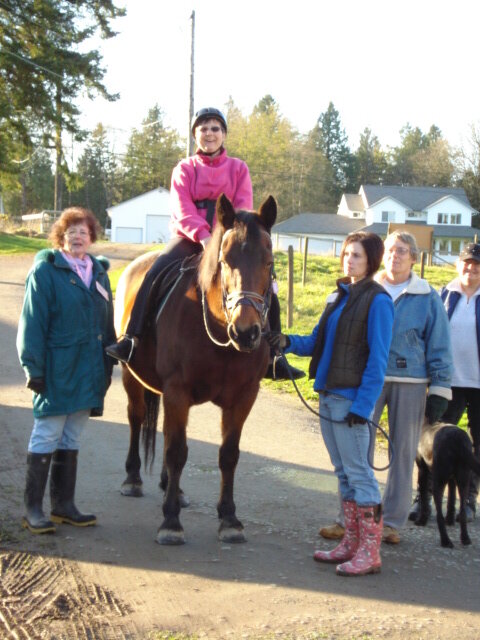
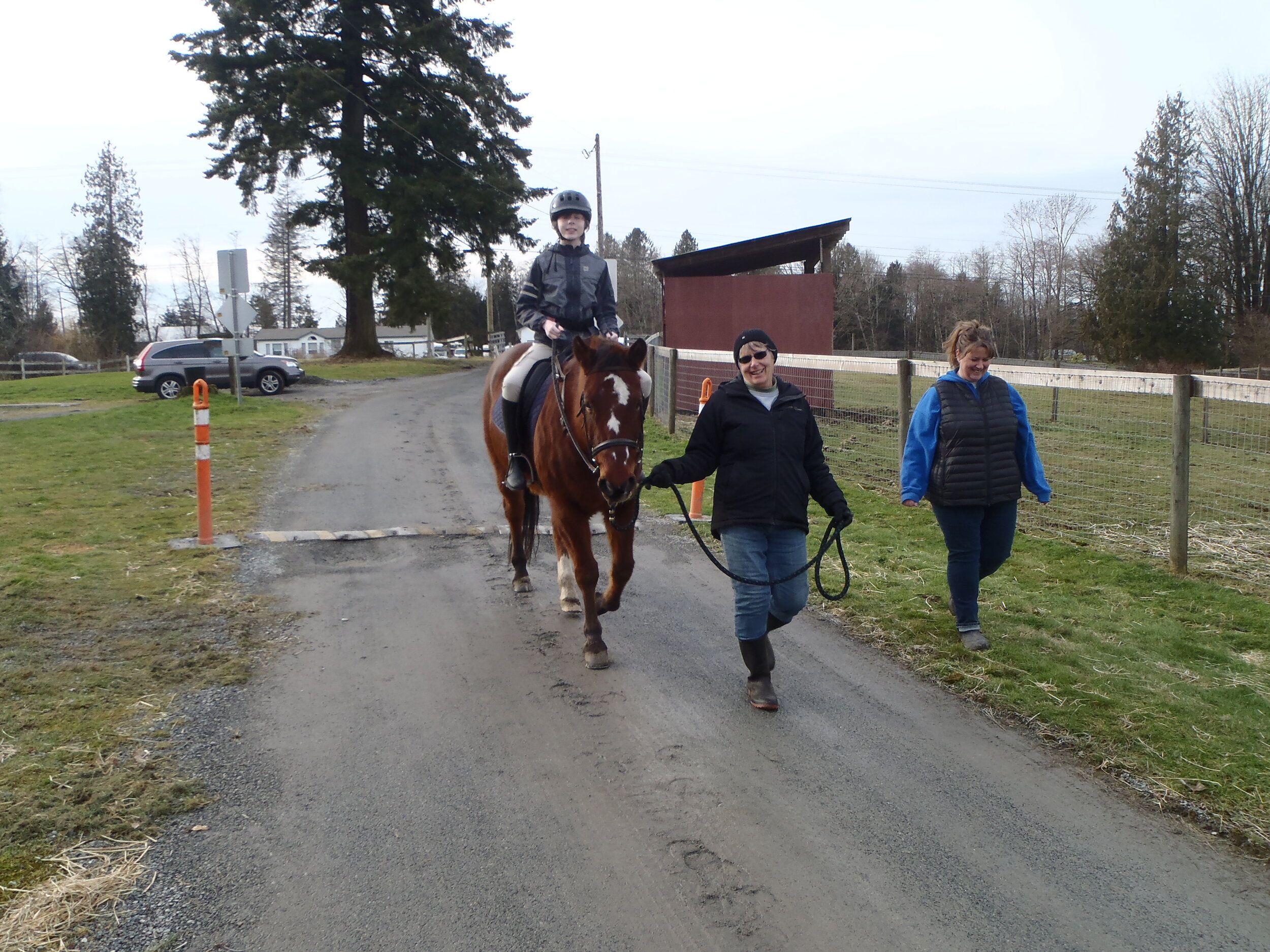
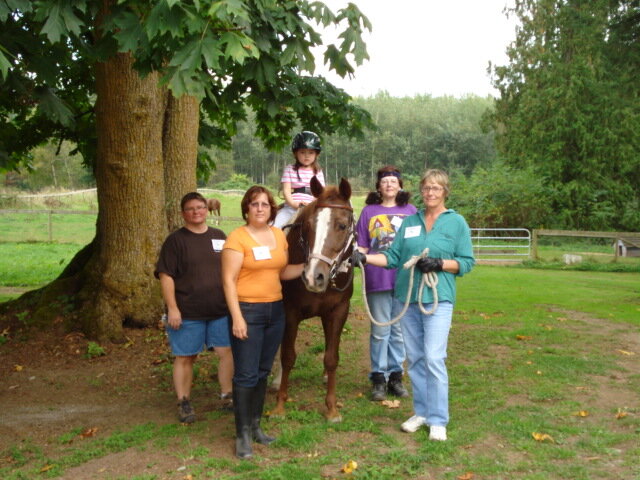
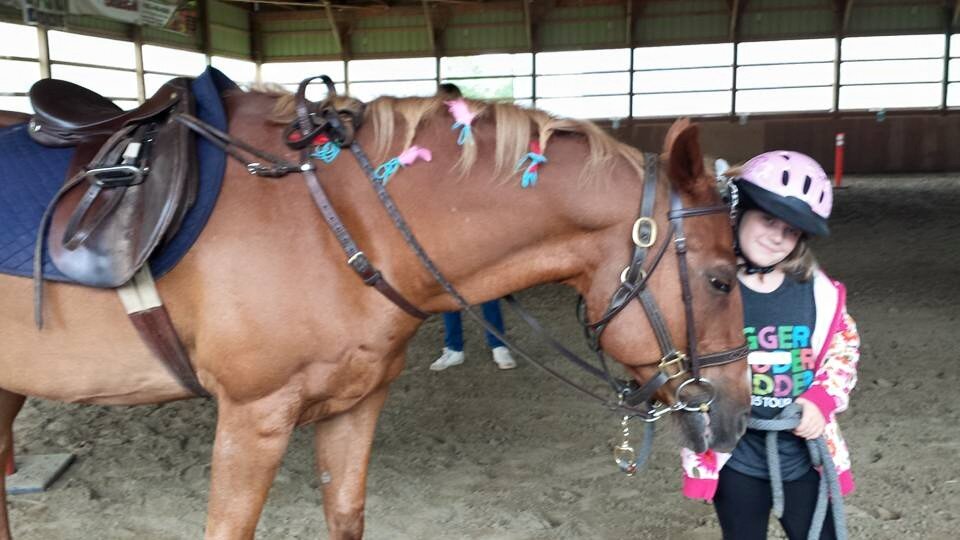
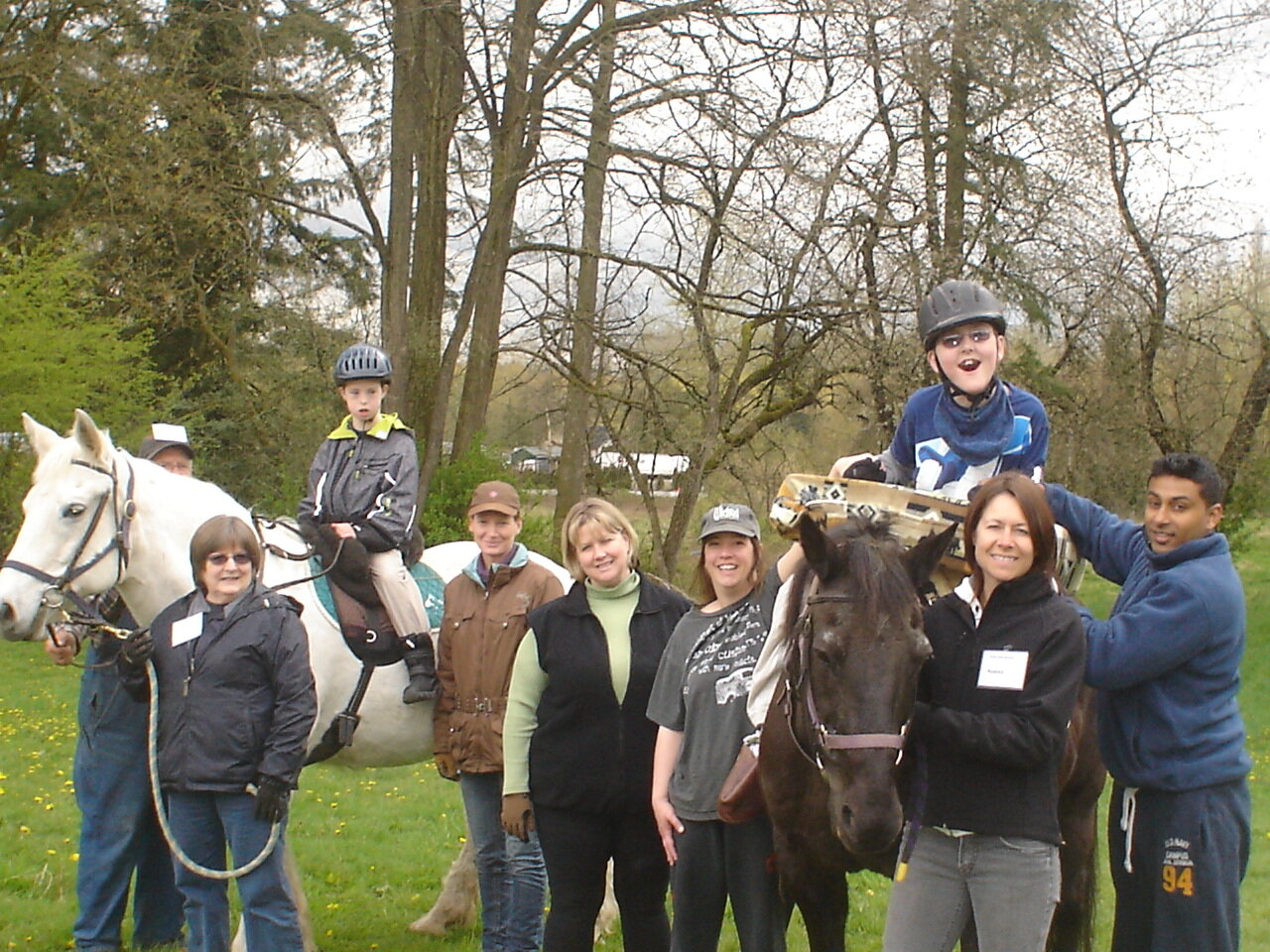
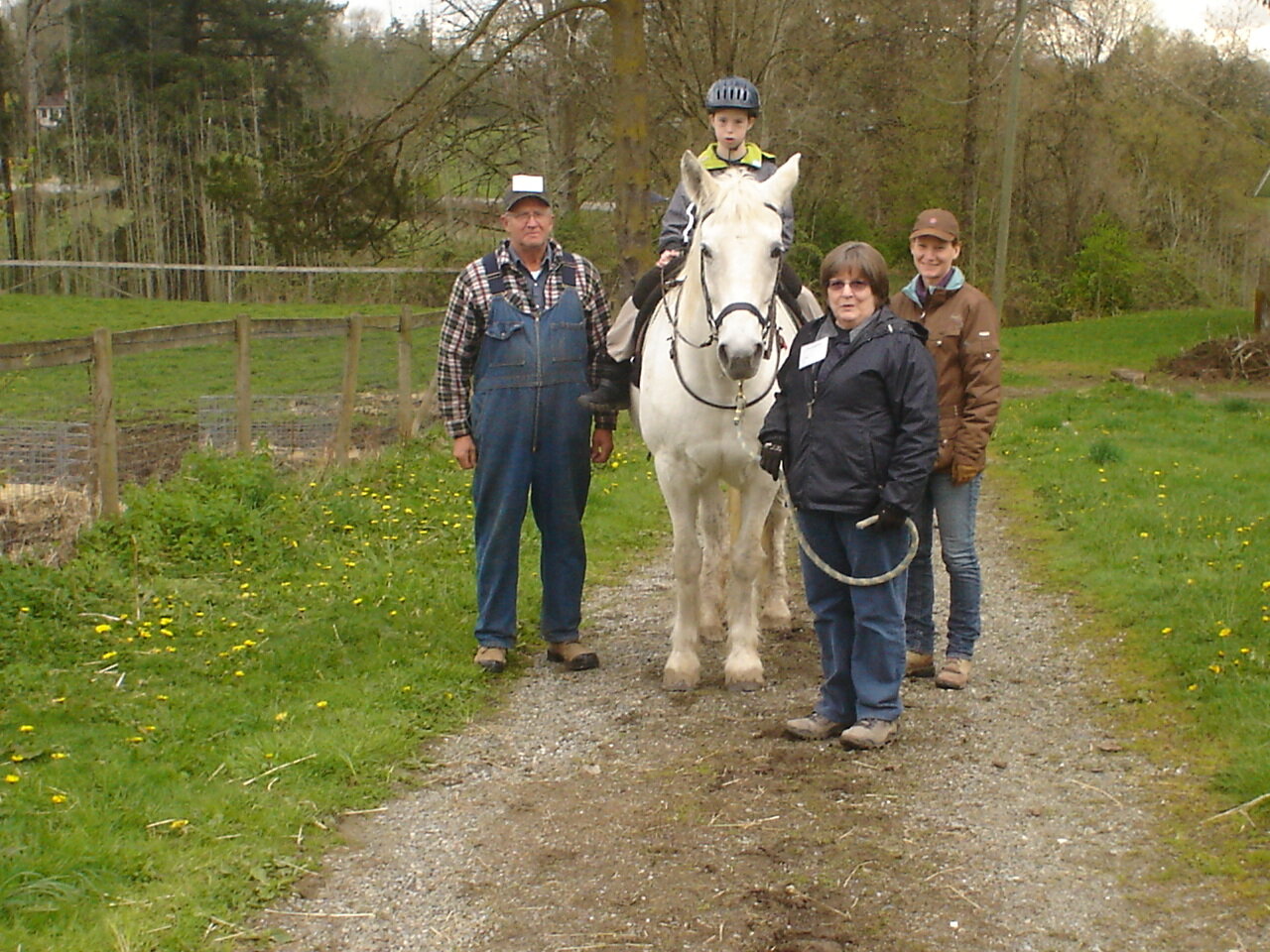



Cost will vary.
The cost of this program varies slightly depending upon funding from government assistance programs such as the At Home Program through the Ministry of Family and Child Development. Please see Funding For Clients for more information.
What to Expect at a Hippotherapy Session
Upon Arrival:
When you arrive, you or your parent or guardian will drive down to the area just in front of the arena designated for parking. After you are parked, you or your parent or guardian may exit the vehicle (watch out for passing horses!) to approach our team member. They will offer you some hand sanitizer and ask you five questions:
Have you been out of the country in the past fourteen days?
Have you been in contact with anyone with COVID-19?
Have you been in contact with anyone with respiratory issues?
Do you currently feel ill?
Are you aware of the risks involved with attending a session during the pandemic?
These questions are necessary given current health concerns, and will be asked of every client who comes to VTEA for a session. If you are able to answer no to the first four questions, a team member will give you the okay to enter the arena.
In The Arena:
The first thing you will do inside the arena is put on your helmet and safety belt, then proceed to the mounting area to mount your horse. In most cases, this will mean being guided up the ramp on the side of the arena and helped onto the horse. After you have mounted, the Leader and Side Walkers will guide you and your horse around the arena, and will see to it that you and the horse are both safe and secure. While you are making your way around the arena, you will engage in a variety of physio-based activities designed to support your physical, mental, and emotional health. This may include visual games, verbal exchanges, or it may simply mean silence while you walk with your horse. Every session is tailored to your needs.
After Your Session:
When your session is up, you will say farewell for now to your instructor and your horse, and then return your helmet and gear to the COVID-19 Officer out front. The Officer will offer you hand sanitizer once again, and wish you well for the rest of your day!
In The Barn (Optional):
Sometimes, our clients prefer to groom and tack the horses rather than ride them. In this case, the clients will work with the instructors in the barn to do just this. Sometimes, a groom and tack session may lead to a riding session, and at other times, clients may arrive specifically for a groom and tack session. Whether a groom and tack session is involved in your session will be discussed with your instructor.
See it in action.
Click on the video to the right to watch a hippotherapy session in action with one of Valley’s founders, Registered Physiotherapist and CanTRA Coach and Examiner, Pippa Hodge.
Hippotherapy is a physical therapy tool for clients with a broad range of diagnoses, including cerebral palsy and multiple sclerosis.
A clear description of hippotherapy is one provided in an abstract by Brandon Rhett Rigby, M.S.B.M.S. (2009) who states:
Hippotherapy is a treatment strategy that uses the multidimensional movement of the horse to stimulate neuromotor, sensory and cognitive systems to facilitate positive changes in the client. The therapist uses clinical reasoning and evidence-based practice to make adjustments in the horse’s movement to bring about those changes in the client. Various positions are used so the client may be positioned sitting backwards, sideways, or lying down on the horse’s back. Most Hippotherapy treatments are carried out at the walk with the horse being lead or long-lined.

